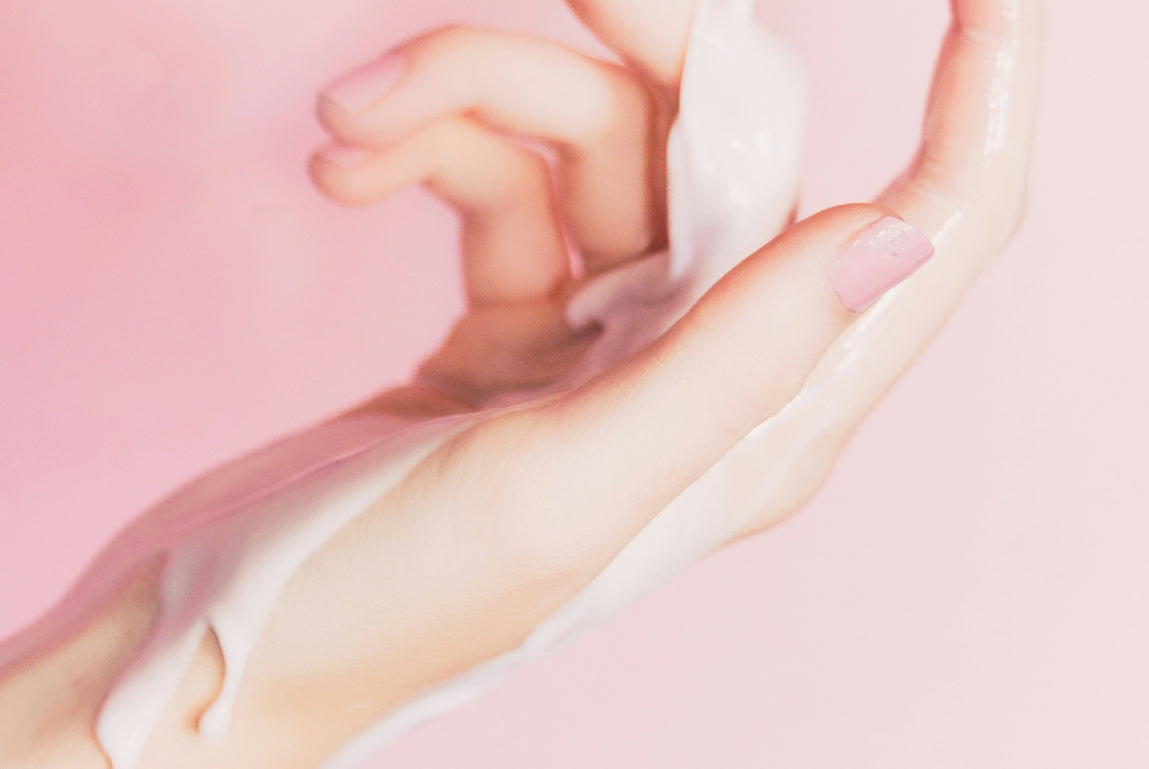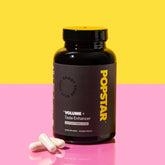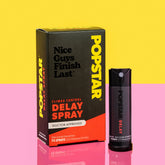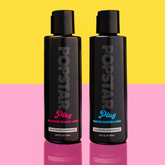

Table of Contents
Key Takeaways
Is semen good for skin? Bold claim, weak science. Stick to skincare, not sex myths.
Semen does contain proteins, minerals, and enzymes—but not in high enough amounts to matter.
Risks include STI transmission, allergic reactions, and breakouts.
Psychological benefits? Sure. Scientific benefits? Meh.
Want glow-up skincare? Choose ingredients made to work, not made in the bedroom.
Why Everyone's Suddenly Asking: Is Semen Good for Skin?
Let’s not beat around the bush—this question has officially gone viral. Whether it popped up in your TikTok scroll, a Reddit rabbit hole, or that one weird group chat, the phrase is semen good for skin has become the stuff of late-night curiosity and eyebrow-raising intrigue.
From DIY beauty hacks featuring egg whites and snail slime to semen facials hailed as the next holy grail, skincare has officially entered its weirdest (and stickiest) era. But does this biologically-loaded bodily fluid deserve a place next to your niacinamide? Or is this one beauty myth best left in the bedroom?
Let’s slide into the facts, shall we?
Breaking Down the Goo: What’s Actually In Semen?
Before we lather it up, let’s look at what semen is made of. A typical load is about 2 to 5 mL (aka a teaspoon). Around 95% of that is seminal plasma—the fluid part—and only about 5% is actual sperm. Inside that mix? A whole cocktail of stuff:
Proteins in semen : About 3–7 g per 100 mL, mostly enzymes that help liquefy the fluid post-ejaculation. Could technically exfoliate a little, but you'd need buckets of the stuff to see a difference.
Sugars : Fructose and glucose help sperm swim, but on your face? They’re basically sweet nothings.
Trace minerals in semen : Zinc, selenium, magnesium, and calcium. Zinc is the MVP here, but the amounts are teeny.
Urea & citric acid : Helps balance pH, but again, way too diluted to matter.
Hormones : We’re talking testosterone and prostaglandins in nanogram quantities. Not exactly enough to spark collagen production.
So yes, semen does contain a bunch of stuff that looks good on paper. But so does a multivitamin. And you’re not rubbing that on your face (we hope).
Skin Science 101: What It Takes for an Ingredient to Actually Work
Here’s the thing: your skin has a job—to keep stuff out.
The outer layer (the skin penetration barrier) is like a velvet rope at an exclusive club. To get past it, ingredients have to be small enough, stable enough, and designed to spark change without causing irritation.
While proteins in semen, enzymes, and minerals sound promising, they’re not formulated for your face. Without the right pH, delivery method, or concentration, they just sit on top until you rinse them off.
That’s why derm-approved ingredients like niacinamide, retinoids, and peptides are chemically optimized to do what they do. Semen is not.
The Semen Facial Myth: Where Did This Come From?
Back in the early 2000s, a few rogue facialists offered a so-called semen facial in exclusive spas, claiming it could plump and clear skin. Then came the porn stars, wellness bloggers, and shock-value influencers promising a "natural glow" courtesy of a post-climax slather.
Add in some poorly-interpreted science and a sprinkle of wishful thinking, and suddenly is sperm good for skin becomes a trending phrase.
Let’s be clear: there are no peer-reviewed studies proving topical semen has any legit skincare benefits.
But there are studies showing potential downsides.
Safety Check: The Not-So-Sexy Side of Semen on Skin
Even if you’re thinking, "Well, it can't hurt," let’s talk safety:
STI risk from semen on skin : Herpes, chlamydia, HPV, and HIV can be present in bodily fluids. Even intact skin isn’t a flawless barrier.
Contact dermatitis from semen : Some folks have allergic reactions, including redness, itchiness, or hives.Bacteria bomb : Semen isn’t sterile. It can carry bacteria like E. coli and Staph. Not exactly a friend to acne-prone faces.
So unless you're doing a kink-informed, STI-safe facial for fun, it's probably not worth the risk.
But What About the Glow-Up From Within?
Now, is semen good for you if swallowed? That’s another hot query, and the answer is: kind of, but not really.
Calories : About 5–7 per teaspoon. Not exactly a pre-workout.
Protein in semen : 0.15 g. Roughly equivalent to a breath of air.
Micronutrients : A whisper of zinc, selenium, and vitamin B12.
If you're engaging in oral sex, enjoy. But thinking of semen as a skin booster or nutritional supplement? That’s a stretch bigger than a pre-yoga warm-up.
Psychological Benefits: The One Area Where Semen Shines
Despite the lack of clinical evidence, intimacy itself has psychological upsides. Oxytocin, endorphins, and dopamine released during sex can give your skin a post-coital flush. That glow? It’s the thrill, not the fluid.
And if your partner wants to try a "love mask" for fun, fine. Get consent, get tested, have a laugh—and then wash your face properly .
Skincare That Actually Works: Derm-Approved Replacements
Want the glow without the goo? Try these instead:
Niacinamide alternatives : Vitamin B3 brightens and strengthens without the sticky finish.
Hyaluronic acid vs semen : HA wins, hands down. Hydrates like a boss. No awkward clean-up.
Peptides : Collagen-boosting proteins small enough to actually absorb.
Topical enzyme benefits : Look for papaya, pineapple, or pumpkin-derived exfoliants—not bodily fluids.
Snail mucin alternative : It's weird, but it's effective and lab-tested. Go with the gastropod.
And if you're looking to enhance your sexual wellness and semen volume the fun way? Popstar Volume + Taste Supplement has your back (and your load).
Final Thoughts: Let’s Not Kid Ourselves
We get it. The idea of semen as skincare is wild, intriguing, and just taboo enough to spark curiosity. But when it comes down to results, is semen good for skin ? Not unless your goal is a pimple with a side of potential pink eye.
If you're after real glow, grab the serum. And if you're curious about your body's own superpowers, check out Popstar Volume + Taste. It’s loaded with the good stuff (and none of the bacteria).
Sex is fun. Skincare should be too—but let’s not confuse the two. Save your face, love your load, and choose products that know what they’re doing.
Ready to glow from the inside out? Try Popstar Volume + Taste Supplement today. Because good sex and great skin aren’t mutually exclusive.
FAQ: Because We Know You’re Still Curious
Is sperm good for skin or just internet hype?
Internet hype. No credible dermatologists are recommending it.
Can semen help clear acne?
The zinc content is too low to help. Use a serum instead.
Could semen act like a natural exfoliant?
Technically yes, but not enough to justify the mess or risk.
Will using semen trigger breakouts?
Possibly. Especially if your skin is sensitive or acne-prone.
Is semen a better option than retinoids or peptides?
Not by a long shot. Leave science to the scientists.
Is semen good for your skin?
Short answer: No credible dermatology guidelines recommend using semen as a skincare ingredient. While semen contains compounds that in theory could have biological effects, there’s no high-quality clinical evidence showing benefits for acne, wrinkles, hydration, or “glow.” Safer, tested products exist.
Why do people think semen helps skin?
Mainly because of viral anecdotes and headlines. Semen contains proteins, enzymes, sugars (like fructose), minerals (like zinc), and trace antioxidants—words that sound “skincare-y.” But presence ≠ proven efficacy, especially at the tiny, variable concentrations found in ejaculate, which isn’t formulated for skin absorption or stability.
What is semen actually made of?
Roughly: water, fructose and other sugars, enzymes, citric acid, amino acids/proteins, zinc and other trace minerals, prostaglandins, and a very small fraction of sperm cells. The composition varies hugely person-to-person, day-to-day, and is not standardized like cosmetic ingredients are.
If it has zinc and antioxidants, couldn’t that help acne or aging?
Topical zinc salts (e.g., zinc PCA) and antioxidants can help when rigorously formulated, stabilized, and tested at effective concentrations with appropriate pH and delivery systems. Semen isn’t a controlled formula; the amounts, stability, and bioavailability are unpredictable. That’s why evidence doesn’t support it as skincare.
Has semen ever been studied as a facial treatment?
Not in well-designed dermatology trials that demonstrate safety and efficacy for cosmetic outcomes. Existing data are not comparable to the robust evidence base behind common actives like retinoids, benzoyl peroxide, azelaic acid, or niacinamide.
Is it safe to put semen on skin?
Skin exposure is not the same as sexual exposure, but risks remain. Potential issues: sexually transmitted infections (some can transmit through mucous membranes and broken skin), allergic reactions (including rare but real seminal plasma hypersensitivity), and irritation. From a hygiene perspective, it’s not sterile.
Can semen transmit STIs through skin contact?
The primary transmission routes involve mucosal surfaces (mouth, eyes, genitals, rectum) and/or micro-abrasions. If semen contacts mucous membranes or compromised skin (cuts, eczema flares, acne lesions), risk increases. This is one reason dermatologists do not recommend using it as “skin care.”
What about the eyes?
Avoid. Eyes are mucous membranes—exposure can be irritating and potentially risky for infection. Flush with clean water or saline if exposure occurs; seek medical advice if symptoms (redness, pain, discharge) persist.
Could I be allergic to semen?
Yes. Seminal plasma hypersensitivity can cause itching, burning, hives, redness, or swelling where semen contacts skin or mucosa. Severe reactions are rare but possible. Anyone with known allergies, eczema, or chronic skin sensitivity should be cautious and avoid untested exposures.
Is it comedogenic (pore-clogging)?
There’s no standardized comedogenicity rating for semen, but proteins and sugars left on skin can be occlusive or serve as a nutrient source for microbes, which could aggravate acne in some people.
Does semen have a stable pH for skin?
Semen’s pH typically ranges around 7.2–8.0 (slightly alkaline). Healthy skin prefers a mildly acidic “acid mantle” (about 4.7–5.5). Repeated application of alkaline substances can disrupt the skin barrier and microbiome.
Could it irritate sensitive or broken skin?
Yes. Any unformulated biological fluid—especially alkaline—can irritate disrupted skin (eczema, razor burn, acne lesions, sunburn). Irritation risks outweigh any hypothetical benefit.
Will semen help acne?
No evidence supports semen for acne. For acne, proven options include benzoyl peroxide, salicylic acid, adapalene/tretinoin, azelaic acid, clindamycin/benzoyl peroxide combinations, and lifestyle tweaks. See a dermatologist for persistent or scarring acne.
Could semen reduce redness or inflammation?
Not reliably. The anti-inflammatory effects claimed online aren’t supported by clinical trials. Formulated actives with evidence for redness include azelaic acid, niacinamide, colloidal oatmeal, and prescription metronidazole or ivermectin for rosacea (under medical guidance).
Does semen moisturize skin?
It is mostly water and proteins, but water alone evaporates and proteins aren’t optimized for barrier repair. Effective moisturizers rely on a balanced mix of humectants (glycerin, hyaluronic acid), emollients (squalane, ceramides), and occlusives (petrolatum, dimethicone) at specific ratios.
Does semen help with anti-aging or wrinkles?
There are no clinical data for anti-aging benefits. Evidence-based anti-aging topicals include sunscreen, retinoids, vitamin C (properly formulated L-ascorbic acid), peptides with data, and AHAs like glycolic acid—plus lifestyle (UV protection, sleep, nutrition).
Can semen help hyperpigmentation?
No evidence for that. Hydroquinone (in some regions, prescription), azelaic acid, niacinamide, tranexamic acid, arbutin, retinoids, and sun protection have supporting data for dark spots/melasma.
What about eczema or psoriasis?
Don’t use semen on inflamed barrier-impaired skin. Stick with fragrance-free moisturizers, topical steroids (as prescribed), calcineurin inhibitors (tacrolimus/pimecrolimus), and dermatologist guidance.
Could semen cause a rash?
It can. Potential irritant or allergic contact dermatitis may occur. If you experience burning, itching, hives, or rash after exposure, wash with lukewarm water and gentle cleanser; consider OTC hydrocortisone for mild irritation and seek medical care if severe.
“Semen facials” are a secret model trick—true?
This is a persistent myth boosted by sensational media. Professional skincare relies on well-tested products and procedures. No legitimate dermatology or aesthetic protocol includes semen.
Is semen a natural collagen booster?
No evidence. Collagen stimulation in skincare comes from retinoids, vitamin C, peptides (with data), microneedling, radiofrequency/laser devices—none of which are replicated by semen.
Does semen contain urea, like some moisturizers?
Urea is a known moisturizer/keratolytic in skincare (2–40% in creams). Semen is not a practical or standardized source of urea; even if trace urea were present, it’s not equivalent to a stabilized urea cream.
“It cleared my acne overnight” stories—how to interpret?
Anecdotes can be influenced by chance, lighting, different angles, or concurrent routine changes. Without controlled trials, they’re not reliable evidence.
Is semen antibacterial?
Human secretions can contain enzymes and antimicrobial peptides, but that doesn’t make them broad-spectrum or safe for skincare. Acne pathophysiology is complex; proven antibacterials/keratolytics are preferred.
Is there any dermatology society endorsement?
No. Major dermatology organizations do not endorse semen for skincare uses.
If someone still decided to try it, what precautions reduce risk?
From a strictly harm-reduction perspective (not a recommendation): avoid contact with eyes or broken skin; consider barrier status (sensitive skin? don’t); wash off promptly; never use as a substitute for sunscreen, acne treatment, or moisturizer; be aware of STI risk and allergy potential.
How should skin be cleaned after exposure?
Use lukewarm water and a gentle, fragrance-free cleanser. Avoid harsh scrubs or hot water. Follow with a basic moisturizer if skin feels dry.
Can semen stain or irritate lips?
Lips are mucosal and sensitive; exposure can irritate. Clean with water and apply a bland occlusive (petrolatum) if chapped.
What about beard area or body skin?
Same guidance: no evidence of benefit; potential irritation; cleanse and moisturize as usual.
Is there a smell—does it linger?
It can have a characteristic scent due to amines and other compounds; washing with a gentle cleanser usually removes it.
Is consent relevant for using semen in any context near someone’s face?
Absolutely. Consent is essential for any sexual activity or fluid exposure. Never surprise or pressure a partner; discuss boundaries clearly.
Hygiene etiquette?
Use tissues, towels, or the shower as preferred. Wash hands before touching shared items, cosmetics, or contact lenses.
Which semen components are cited as “beneficial” and why that’s weak evidence?
Fructose/sugars: Humectant in theory, but sticky residue can feed microbes.
Zinc: Useful in controlled formulas; unknown dose/availability in semen topically.
Proteins/enzymes: Not designed for skin delivery; can be allergens/irritants.
Prostaglandins: Bioactive but associated with irritation in eyes; not a cosmetic ingredient.
Spermine (a polyamine): Sometimes cited as an “antioxidant,” but cosmetic-grade polyamines are tested/standardized—ejaculate is not.
Stability matters—why?
Cosmetic actives are stabilized against oxidation and pH shifts. Biological fluids degrade quickly, reducing any hypothetical benefit and raising irritation risks.
Bioavailability & penetration—do these compounds even get where they need to?
Skin is a barrier. Without delivery systems (liposomes, solvents, correct pH), large or unstable molecules rarely penetrate effectively.
Microbiome considerations?
Skin flora like to eat sugars and proteins. Leftover residue can shift microbiome balance and potentially worsen breakouts or odor.
If the goal is clear, smooth skin, what should I use instead?
Daily sunscreen (SPF 30+). The #1 anti-aging step.
Gentle cleanser + moisturizer. Fragrance-free, pH-balanced, ceramides/squalane/nicinamide are great.
Evidence-backed actives:
Acne: benzoyl peroxide, salicylic acid, adapalene/tretinoin, azelaic acid.
Texture/pores: retinoids, AHAs (glycolic/lactic).
Tone/hyperpigmentation: vitamin C (stabilized), azelaic acid, niacinamide, tranexamic acid.
Redness barrier support: azelaic acid, niacinamide, colloidal oatmeal; minimize triggers.
Any “natural” options better than semen?
Yes—plenty: aloe vera gel (stabilized), colloidal oatmeal, shea butter, jojoba oil, honey (medical-grade manuka for wound care under guidance), green tea extract. These still work best in tested, stable formulations.
What if I want a zinc product specifically?
Look for zinc PCA or zinc sulfate in acne formulas from reputable brands. These are standardized and far safer than experimenting with biological fluids.
What about antioxidants?
Consider stabilized L-ascorbic acid (vitamin C) serums (10–20% with low pH), ferulic acid, vitamin E, resveratrol, EGCG (green tea). Choose opaque, air-restricted packaging.
Barrier repair?
Ceramides, cholesterol, free fatty acids, urea (2–10%), hyaluronic acid, and panthenol. These have mechanistic and clinical support.
My partner believes semen is good for skin—how do I respond?
Use a kind, facts-first approach: “Dermatologists don’t recommend it; there’s no clinical evidence; there are mild but real risks; and there are safer, proven products.” Offer to try a fun, evidence-based face mask together instead.
Is it okay to enjoy it as part of intimacy even if it’s not skincare?
Consenting adults can choose what’s right for them. Just separate sexual preference from skincare claims, and keep hygiene and STI risk in mind.
Pregnancy or trying to conceive—any concerns for facial exposure?
Discuss with a healthcare professional. While skin contact isn’t typically a reproductive risk, it’s prudent to avoid unnecessary exposures and ensure STI screening is up-to-date.
Immunocompromised individuals?
Be extra cautious. Avoid non-sterile biological fluids on skin. Stick with validated skincare products.
People with eczema, rosacea, or perioral dermatitis?
Avoid potential irritants; semen’s alkalinity and proteins can aggravate these conditions. Use gentle, fragrance-free routines and targeted treatments.
“Glass skin” or glow—what’s the plan?
Daily sunscreen, gentle chemical exfoliation 1–3×/week (AHA/BHA), a retinoid at night, and steady barrier support (niacinamide + ceramides). Drink water appropriately, get sleep, manage stress.
Acne control quick-start?
AM: gentle cleanse, benzoyl peroxide 2.5–5%, moisturizer, sunscreen.
PM: gentle cleanse, adapalene 0.1% or tretinoin (if prescribed), moisturizer.
Spot: 2% salicylic acid or 10% azelaic acid for inflammatory lesions.
Sensitive skin routine?
Strip it back: fragrance-free cleanser, mid-weight ceramide moisturizer, mineral sunscreen. Add one active at a time (e.g., niacinamide 2–5%) and patch-test.
Why doesn’t a viral testimonial “count”?
Because it lacks controls, blinding, and standardized conditions. Skin naturally fluctuates; lighting and cameras deceive. Good science isolates variables and measures outcomes objectively.
If semen were great, wouldn’t brands bottle it?
Ethical, safety, sourcing, and stability issues aside, brands chase any effective, legal idea. The fact that mainstream dermatology ignores semen is telling.
What’s the “acid mantle,” and why does semen disrupt it?
Your skin’s surface is mildly acidic to support barrier enzymes and microbiome. Alkaline substances (like semen) can raise surface pH, hindering barrier function and potentially increasing irritation and infection risk.
How do I fix a disrupted barrier?
Pause exfoliants/retinoids for a few days; use a ceramide-rich moisturizer; occlude with petrolatum at night if very dry; reintroduce actives slowly once calm.
If I reacted after exposure, what next?
Rinse with lukewarm water, cleanse gently, apply a bland moisturizer, and avoid actives for 48–72 hours. For mild inflammation, short-term OTC hydrocortisone can help. Seek care for severe swelling, hives, eye involvement, or breathing issues.
How to patch-test new skincare (not semen)?
Apply a pea-sized amount behind the ear or on the inner arm daily for 3–5 days. If no reaction, try the face every other night, then increase.
What labels matter most?
Non-comedogenic (for acne-prone)
Fragrance-free (for sensitive)
Broad-spectrum SPF 30+
Percentages of actives (retinol %, azelaic %, etc.)
pH for acids and vitamin C when relevant
Ingredient order & concentration?
Ingredients are listed from highest to lowest concentration (above 1%). Actives near the top (and with known effective ranges) are more likely to work than exotic botanicals at trace levels.
If topicals aren’t enough, what else helps?
Prescription retinoids
Oral acne meds (e.g., doxycycline, spironolactone—per clinician)
Chemical peels (glycolic/salicylic)
Laser/RF, microneedling
Dermaplaning (for texture/hair)
Always seek a qualified professional.
Diet & breakouts?
High glycemic load and some dairy (esp. skim) may worsen acne in susceptible people. Focus on whole foods, omega-3s, and balanced meals.
Sleep, stress, and skin?
Stress hormones impact oil production and inflammation; inadequate sleep impairs repair. Aim for consistent sleep and stress management practices.
Hydration and skin?
Hydration supports overall health, but surface hydration comes from topical humectants/emollients more than chugging water alone.
So—Is semen good for your skin for real?
As a skincare ingredient, no—it’s unproven, unstandardized, and potentially irritating or risky, especially near eyes or broken skin. If your goal is clearer, smoother, brighter skin, use tested, stable products and routines.
One-sentence takeaway for skeptics
If it’s not clinically studied, not standardized, and comes with avoidable risks, it doesn’t beat sunscreen, retinoids, and a gentle, proven routine.
Quick Reference: What To Use Instead (By Goal)
Acne: benzoyl peroxide (AM), adapalene/tretinoin (PM), salicylic/azelaic acid, light non-comedogenic moisturizer, SPF 30+.
Glow/Texture: L-ascorbic acid (AM), retinoid (PM), weekly AHA, daily SPF.
Redness: azelaic acid, niacinamide, fragrance-free barrier creams, mineral sunscreen.
Dryness: hyaluronic acid, glycerin, ceramides, petrolatum occlusion at night if needed.
Dark spots: vitamin C, azelaic acid, niacinamide, retinoid, daily SPF (absolutely essential).
Mini-Glossary
Acid mantle: Skin’s mildly acidic protective film.
Comedogenic: Tendency to clog pores.
Humectant: Draws water into the outer skin (e.g., glycerin).
Emollient: Softens/smooths skin by filling gaps (e.g., squalane).
Occlusive: Traps moisture, reduces TEWL (e.g., petrolatum).
TEWL: Transepidermal water loss—moisture escaping from skin.
STI: Sexually transmitted infection.
Final Word
The idea that semen is good for your skin is a catchy myth, not a dermatology-backed method. If you like the idea because it sounds “natural,” remember: natural ≠ safe or effective. Your best bet is a boring-but-brilliant routine—sunscreen, gentle cleanser, proven actives, patience—and, if needed, professional guidance.











